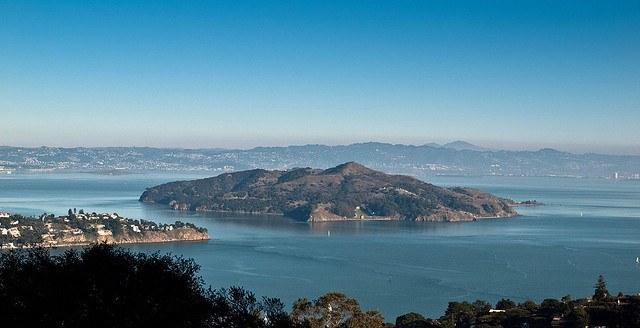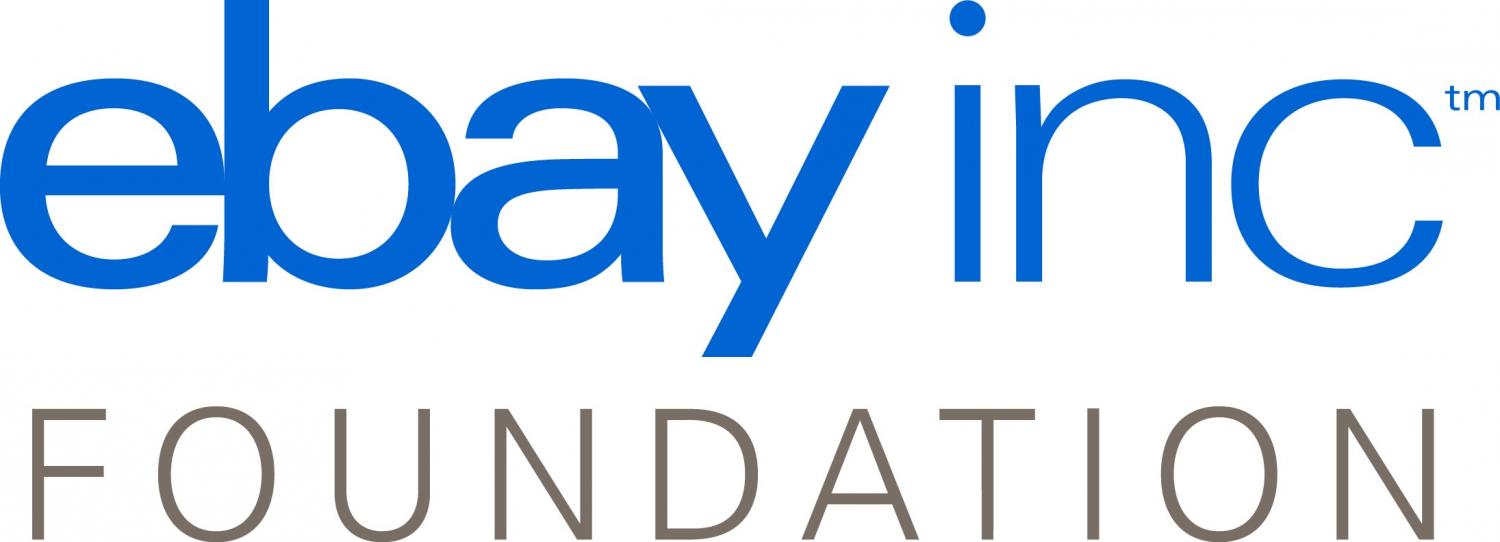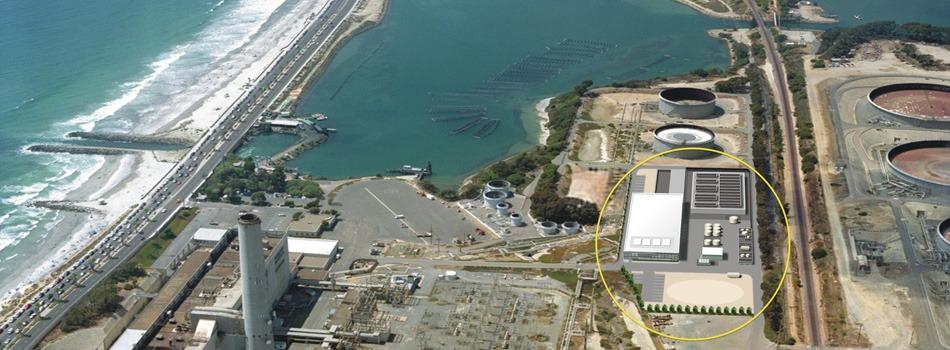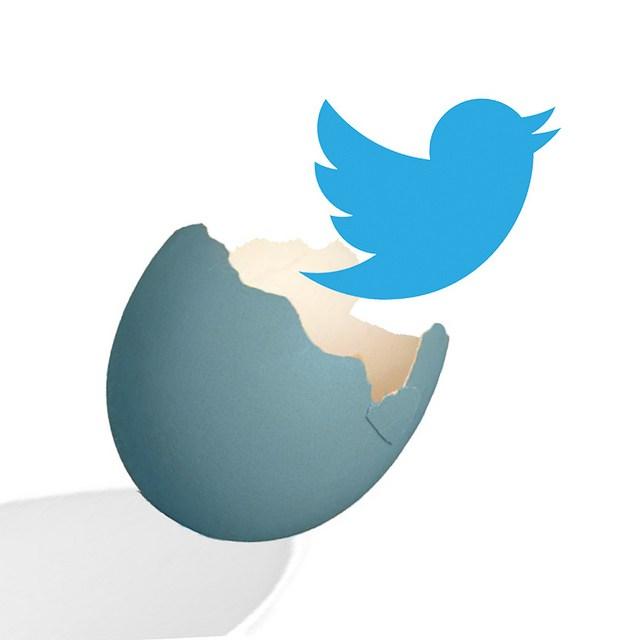Visualize Sea-Level Rise with Time Goggles


We humans are a visually-attuned species. For most of us "seeing is believing," in that we understand complex ideas, mathematical concepts or raw data best when we can visualize them.
This ability to conjure up the abstract or unseen unlocks our understanding of some of nature's more closely-held secrets; it gives us a "potential reality" glimpse of the impact of our actions, before we stumble unwittingly into undesired consequences. At the risk of invoking one too many clichés all at once: A picture is worth a thousand words.
Last year we introduced readers to the OWL, a device that its creator, San Francisco-based startup OWLized, calls "time goggles." The OWL looks like the common "retro" viewfinder you've seen and probably used at scenic lookouts in national parks across the country. Drop a dime into the slot and get a close-up view of the world around you. The difference is that the OWL lets you see into the future, or even the past, and there's no dime required to see it.
Based on the success and rapid advances in computer visualization and 3-D modeling technology, the OWL debuted in 2013 with a project in partnership with Autodesk for San Francisco's Better Market Street initiative.
Using Autodesk's Infraworks civil design modeling software, the OWL gave all stakeholders in the project, from city residents to merchants and policymakers, a 3-D, real-life glimpse into the proposed future of Market Street, the hub of downtown San Francisco.
The ability to transform conceptual engineering and architectural drawings into a lifelike representation -- displayed through the familiar viewer -- has helped guide the future of San Francisco.
What if we could turn that viewer out towards the bay, and look at what the future holds with climate change and rising seas? For many residents along the Northern Bay shoreline, the OWL will soon do just that.
Visualizing sea-level rise
Projections indicate 11 to 19 inces of sea-level rise along the San Francisco Bay by mid-century and as much as 30 to 55 inches by 2100, or 2.5 to over 4.5 feet. Such rise in sea level will clearly have significant impact along the Marin waterfront (indeed, the entire Bay Area) in the coming decades.
Two OWL viewers will be installed at the Almonte entrance of the Sausalito-Mill Valley multi-purpose pathway for 12 weeks this spring. The viewers are part of a pilot project that will explore ways to engage community understanding and participation in developing policy to adapt to sea-level rise in the region.
The Federal Emergency Management Agency (FEMA) is responsible for mapping regional flood plain areas, a task it hopes to accomplish alongside the local community. The OWLs will give an opportunity for anyone using the pathway to get a real impression of what the surrounding area will look like as the sea rises.
Using Owlized virtual reality software, the OWL will project visualizations--made with Autodesk 3D modeling tools, the OWLs will project possible future scenarios in the actual 360-degree environment, as well as how the area looked in the past. It's one thing to talk about 55 inches of sea-level rise; it's another thing to actually see it.
A $150,000 FEMA grant is funding the effort, a public-private partnership between FEMA, the County of Marin, OWLized, Autodesk, the nonprofit Climate Access and research partner Dr. Susanne Moser of Stanford University.
“This is such an exciting way to learn about future sea-level rise,” said Supervisor Kate Sears, representing District 3 in Southern Marin county. “I’m very curious to see how the community interacts with it, especially kids. They represent the generation that will live with the effects of climate change. I hope that the OWLs will intrigue people and inspire action.”Image credit: Franco Folini, courtesy flickr
Ed note: This post has been edited since it was first published.
The Eco-Socio Revolution in Jordan's Second Largest City


Editor's Note: As a lead-up to Abu Dhabi Sustainability Week, Jan. 17-24, Masdar sponsored a blogging contest called “Describe the Ideal City in 2030.” The following post was a runner-up.
By Ayah Alfawaris
Today is the first working day in 2030. On my way to work, I check my smart home application on my mobile as usual. It tells me I consumed almost 14 kilowatt-hours of electricity yesterday, and I produced around 10 kWh. But that’s fine since I’m still making money out of the subsidized feed-in tariff. I look out of the window, fascinated by how Irbid has transformed into an incredibly sustainable city in no time.
Irbid is Jordan’s second largest city, after Amman. It has always attracted students from all over the Middle East and Asia for having some of the best universities in the region. Only 15 years back, living in Irbid was full of challenges on so many levels: Employment rates were extremely low, as all SMEs and big corporations were based in Amman; there were more than 600,000 Syrian refugees in Zaatari Camp alone; and, as every other Jordanian city, Irbid had no natural resources at all. Jordan was the world’s second water-poorest country and used to import 97 percent of its energy.
All of those issues were resolved when the municipality introduced the iMEP (Irbid Master Eco Plan). That was more of what I like to call EcoSocioRev: an Ecological, Economical and Social Revolution. Many programs were initiated right after to cover almost every aspect of life in the city such as iShare, iGenerate, iProduce, iPlant, iWalk, iRecycle, etc.
We live now in a smart house, properly insolated, energy efficient and powered by a hybrid system made of building-integrated photovoltaics, solar thermal and vertical-access wind turbines. Houses now are tinier as we have access to the compound’s shared facilities, such as a sports center, kids’ playground and library. All residential areas now are made of compounds, which have their own internal bike-sharing systems, small farms to plant enough vegetables for the residents, waste corners and a solar-powered electric vehicle charging stations.
Irbid has become a pedestrian- and biking-friendly city, all vehicles are now electrical including ambulances and fire engines, and almost no one has a car nowadays. If we need one, we can rent the compound’s electric car. Different compounds, universities, schools and business parks are connected through an electric locomotive powered by concentrating solar power, photovoltaics and wind power. This was built only five years ago after sodium batteries became commercially viable. Since then, Irbid became a zero-energy city, and the distributed energy generation helped in achieving this.
Employment issues have successfully been resolved especially after Amman’s bubble burst. It has been proven that it’s more feasible to open a business in Irbid than in any other place in Jordan. Thus, many startups have been founded over the past 10 years by students and fresh graduates, and big corporate have opened branches in Irbid. People now call it the Jordanian Silicon Valley; a great deal of research is being done here, and many others work in power plants, farming and water desalination. Water is no longer an issue as its being now pumped from Aqaba, through a canal covered by solar PV to generate energy and reduce the evaporation.
"No Waste is Going to Waste" is one of my favorite initiatives. It was launched back in 2017 by the housewives and female refugees who created thousands of jobs for themselves. Some local trendsetters have introduced eco-fashion to the community by recycling clothes into modern designs, which are now being sold all over the Middle East and North Africa region.
Irbid has come a long way since 2015 through many small leaps and a few big ones. Who would have thought urbanism can challenge the world’s most serious problems in a couple of decades and succeed?
Image (cropped): Flickr/mozgovoy6709
eBay Foundation's Plan to Get Indonesian Businesses Online


Indonesian entrepreneurs face many challenges in commerce these days. According to the World Bank Group, the country is No. 114 on a list of 189 economies ranked for their ease of doing business in the global marketplace. While that standing has improved in recent years, some of the hardest challenges that business owners face still include issues like resolving insolvency and getting credit.
They also face significant challenges in trading across borders. Some of those challenges are due to regulatory and financial issues like getting export documentation handled and the cost of exporting goods to other countries. This is illustrated in the numbers: The U.S., for example, ranks 24th (out of 189) in the ease of trading across borders; Indonesia is 62nd.
The difficulties that businesses face in everyday commerce are often magnified by their lack of access to things we take for granted in the West, like having a website. That visibility by potential customers is really important to a business owner's ability to make a living, said Andy Dwonch, CEO of Kolabo, which sets up websites for entrepreneurs.
And, of course, compounding that challenge is that all-familiar learning curve of setting up a website.
"Many of our clients when we meet them for the first time, they may have an inkling of what it means to have a website, but the understanding of what it takes to get to that point is pretty fuzzy."
Kolabo's efforts to improve access to the Web have attracted the attention of the ebay Foundation, which is now partnering with Kolabo in its mission. Ebay's Opportunity Project partners with organizations and companies to improve access to education and economic resources for small, medium and growing businesses. Kolabo is one of a handful of such entities that receive resources from the Opportunity Project.
But Kolabo doesn't just receive funding. Companies like Kolabo gain access to expertise in areas that eBay is best suited to inform: connecting buyers and sellers in the marketplace, explained Amy Millington, president of the eBay Foundation.
"We're looking at ways that we can apply our technology and our skills-based volunteers to help [companies like] Kolabo grow and have even more impact," said Millington.
The outcome is a benefit to all sides. Kolabo gains community interface and access to clients, while the growing business gains visibility. Of course, eBay benefits as well, by increasing its global brand and access to new markets.
To set up the new website, Kolabo first sits down with the entrepreneurs and helps them determine the kind of site they need. According to Dwonch, Kolabo does everything, from the initial research to the photography and website set-up, and then teaches the entrepreneurs how to manage their sites.
"The ripple effect can really be felt throughout the community," said Millington, who pointed out that the increasing success of a small business can have exponential impact on its neighbors, as well as its business owners.
The eBay Foundation posted testimonies and images of some of the small businesses that have benefited from Kolabo and this partnership. Most interesting is that eBay's concept is not only opening door to online advertising for the businesses, but also presents a way to break through many of those challenges faced in connecting with global buyers -- by providing a platform on which to connect with buyers.
For eBay, which is forecast to grow an average of 12.41 percent over the next five years, their investment in Kolabo's expertise and community engagement appears to be smart business.
Check out the video below for more information on the partnership.
Jaguar Land Rover makes safety leap with 'Bike Sense' research


Jaguar Land Rover (JLR) is developing a range of new technologies that will use colours, sounds and touch inside cars to alert drivers to potential hazards and prevent accidents involving bicycles and motorbikes.
JLR's 'Bike Sense' concept technology research will aim to identify the best warning colours and sounds that will trigger an instinctive response from the driver to prevent accidents. For example, door handles will ‘buzz’ the driver’s hand to prevent doors being opened into the path of bikes and accelerator pedals will vibrate if moving the car would cause an accident.
Dr Wolfgang Epple, director of research and technology, Jaguar Land Rover, said: “Bike Sense takes us beyond the current technologies of hazard indicators and icons in wing mirrors, to optimising the location of light, sound and touch to enhance this intuition. This creates warnings that allow a faster cognitive reaction as they engage the brain’s instinctive responses. If you see the dashboard glowing red in your peripheral vision, you will be drawn to it and understand straight away that another road user is approaching that part of your vehicle.”
“By engaging the instincts, Bike Sense has the potential to bridge the gap between the safety and hazard detection systems in the car and the driver and their passengers. This could reduce the risk of accidents with all road users by increasing the speed of response and ensuring the correct action is taken to prevent an accident happening.”
Nearly 19,000 cyclists are killed or injured on UK roads every year.
Largest Seawater Desalination Plant to Open Next Year


The San Diego area will soon be the home of the largest seawater desalination plant in the Western Hemisphere. But with a steep $1 billion price tag, the question is whether the Carlsbad Desalination Project will be worth it from a financial and environmental perspective.
Drought-plagued farmers probably think so, because after three years of drought they can’t irrigate: California’s reservoirs are filled with more mud than water. When operational in 2016, the plant will provide up to 50 million gallons of water daily to San Diego county’s 3 million residents. Still, that’s only 7 percent of the region’s water needs.
But a recent article in Fortune notes that desalination is “far more expensive than damming rivers and pumping ground water. Furthermore, critics worry about the environmental consequences and argue that water conservation is a much cheaper option.”
Water conservation is a good option, assuming that there is water available to conserve.
Regarding desalination, “We end up spending a lot of money and getting very little water,” says Conner Everts, executive director of the Southern California Watershed Alliance, who was quoted in the Fortune article. He opposes desalination plants because of their cost and their potential impact on the environment. “Don’t think of the ocean as an endless reservoir, but a fragile ecosystem,” he continued. Everts says the briny waste that goes back into the ocean could kill marine life.
It has taken 12 years of planning, including more than six years in the state’s permitting process, to get the final approvals from state regulatory agencies. Construction was also delayed by more than a dozen lawsuits that raised environmental concerns.
A 30-year Water Purchase Agreement is in place between the San Diego County Water Authority (SDCWA) and Poseidon Water for the entire output of the plant. Poseidon specializes in developing and financing water infrastructure projects, primarily seawater desalination and water treatment plants.
The desalination plant site is a 6-acre parcel in an area that leaves the majority of the Encina Power Station (EPS) property open for potential recreational or redevelopment activity at some future date.
The desalination facility is connected to the discharge channel of the EPS at two locations. The intake pump station is connected to the upstream portion of the discharge channel and delivers 100 million gallons per day of seawater to the desalination facility. Half the seawater processed by the desalination facility will be converted to high-quality drinking water. This water is delivered to Carlsbad and the surrounding communities.
The remaining water, 50 million gallons per day of seawater with an elevated salt content, is returned to the discharge channel where it is diluted with additional seawater prior to being discharged to the ocean. “This ensures that the increased salinity will not impact the marine organisms in the vicinity of the discharge channel,” according to the plant’s project overview.
To desalinate or not to desalinate? This is another of those “it’s complicated” climate change infrastructure issues that will become even more so as water battles come to the fore in areas where there is too little of it -- and other areas where rising sea levels will provide too much of it.
Image credit: Arial view of the desalination site from the Carlsberg Desalination Project website
Video: The World’s First Accelerator Dedicated to Lifting Girls Out of Poverty


Editor's Note: This post originally appeared on Unreasonable.is.
By Daniel Epstein
The Girl Effect Accelerator represents the first program of its kind: an international accelerator dedicated exclusively to scaling up ventures that are positioned to benefit millions of girls in poverty.
Today, less than 2 cents of every international development dollar goes to girls — the very people who we believe could do most to end poverty. If we don’t put girls at the center of development, the world misses out on a tremendous opportunity for change. So, this past year our team at Unreasonable Group was privileged to partner with the Nike Foundation (co-founders of the Girl Effect) to launch this program in an effort to make girls visible to the entrepreneurial, business and investment worlds.
We launched our inaugural program this in November just outside of San Francisco. Throughout the program, we aligned 10 ventures with world-class mentorship, strategic financing and access to a global network of support. Our ultimate aim was to rapidly scale up the benefit these ventures can bring to girls in poverty. We are going to continue to work with each company on this mission into the years to come.
How we selected the companies
A lot of people ask us how we went about determining which companies should participate in the inaugural program. Unlike other Unreasonable programs where we have an open call for applications, for the Girl Effect Accelerator we scoured the globe and hand-picked ventures we were convinced are best positioned to change the game for millions of girls. This was the basic selection criteria we used:
- For-profit model: Every venture invited into the program is leveraging a for-profit business model.
- Market traction: We wanted to see a majority of selected companies have an annual revenue exceeding $500,000 in 2013. (Ultimately, the average company selected generated $2.2 million in revenue in 2013)
- Highly scalable: We only invited ventures that we believe are set up to scale internationally and benefit girls in multiple countries.
- Commitment to girls: The leadership of each venture needed to demonstrate to us a clear commitment to fulfilling the Girl Effect vision.
- Tracking impact: Each invited venture agreed to actively measure their impact on girls living in poverty on a semi-annual basis.
- Local teams: We only invited ventures where a majority of their team members live and work in the countries they operate.
For more information on the accelerator, check out the video below.
And check out Unreasonable.is over the next 10 days for a post with a TED-style talk that showcases the leadership of each of the companies and their unique potential to unleash the Girl Effect at scale.
Inaugural Girl Effect Accelerator Video from Unreasonable Media on Vimeo.
Image of Ethiopian schoolgirls: Jessica Lea/Department for International Development via Flickr
Daniel Epstein is founder and CEO of Unreasonable.is.
Stuffed Animal Tours: Compassionate Tourism of the Future?


Travel tours are big business in Japan, especially this year, given the country's recessionary struggles. Domestic tour sales were more than double those of international tours in 2014 for three of Japan's top travel wholesalers (JTB KNT-CT Holdings Nippon Travel Agency) , proving that destinations like Mt. Fugi, Osaka and Kyoto still command plenty of interest at home.
And anyone who has vacationed in Japan, and taken an organized tour of one of the country's thousands of shrines and temples, knows that Japan's many travel destinations are best appreciated up close. They are also often highly understated when it comes to walking and stamina.
Visiting the ancient Mt. Osore at the northern tip of the country or taking part in Yamagata's snow lantern festival northwest of Tokyo can be difficult for elderly or mobility challenged travelers, who may not be able to make the three- to eight-hour trip by car or bullet train, let alone manage the walking tour that follows.
So, one medical supply company with a big heart and an unusual amount of imagination came up with an answer: stuffed animal tours.
According to The Japan Times, residents who have always wanted to visit, say, a few of the 88 temples along the 750-mile-long Shinkoku Pilgrimage Trail, can send their favorite stuffed animal in their stead for about $20. And individuals who have a yearning to see Japan's unusual whirlpool currents but wouldn't be able to make the high-speed boat trip, can send their favorite companion for that unusual photo shoot for $34.
Owners pack up and send their emissaries to Sudachi Travel by courier, and the company takes care of the rest. The cuddly companions receive their very own escort, and the owner receives a panoply of photos and postcards from each destination. At the end of the trip, the stuffed animals are returned by mail, accompanied by a CD of photos and memorabilia from the tour.
Sudachi Travel is owned Namiko Miki and is located in Itano on the mountainous Shikoku Island, about seven hours southwest of Tokyo. The concept has also inspired a local elder day center to start its own stuffed animal fruit-picking tour, in which attendees at the center (all of whom are 70 and older) send their companions on the traditional citrus fruit-picking tour. For attendees who can't make the time-honored trip, sending a photogenic emissary is almost as good as being there. The stuffed animal is returned to the center with complimentary citrus fruit.
The tours have been such a hit that Sudachi Travel has already started planning for overseas tours.
Some might ask whether the carbon footprint left by a plane full of well-dressed stuffed animals on their way to take photos in New York or Disneyland has a place in today's CO2-conscious world. It's a tough question when considering that more than 20 percent of the population of the world's fourth-largest economy comprised elders above the age of 65 in 2007. That number is expected to reach 30.7 percent by 2030.
But as one 95-year-old attendee of the day center summarized after one of the trips: There's also immense value to be gained from exceptional acts of compassion.
“I want (my stuffed toy) to go traveling again,” remarked Noboru Fujita, after his envoy returned accompanied by the prized Japanese sudachi fruit.
What do you say to that?
Image of stuffed animal: Yasuhiko Ito
Image of traditional Japanese garden, Yamagata: Tanaka Juuyoh
Corporate responsibility features high on millenials' radar


Business should focus on people and purpose, not just products and profits according to Deloitte Touche Tohmatsu Limited's (Deloitte Global) fourth annual Millennial survey.
Deloitte Global surveyed 7,800 graduates born after 1982 in full-time employment across 29 countries, including the UK, on effective leadership, how business operates and impacts society.
Over 70% of UK respondents say businesses have a positive impact on society, compared to 82% in emerging markets and 73% globally. However, 77% of UK Millennials, and 75% globally, believe businesses are focused on their own agenda rather than helping to improve society. Just 48% of UK Millennials say businesses show strong leadership on important social issues, compared to 61% globally.
Similarly, just 39% of UK Millennials say businesses act in an ethical manner, against 52% globally.
Steve Almond, chairman of Deloitte Global, said: ?“The survey sends a clear and strong message to business leaders that, to stay engaged with Millennials, they need to focus on their broader purpose and their people as much as they do on products and profits.”
Barry Salzberg, ceo of Deloitte Global, added: “Millennials want more from business than might have been the case 50, 20, or even 10 years ago. They are sending a very strong signal to the world's leaders that when doing business, they should do so with purpose. The pursuit of this different and better way of operating in the 21st century begins by redefining leadership.”
Picture credit: © Shmeljov | Dreamstime.com - Six Young Businesspersons Standing In A Row Photo
3p Weekend: 30 CSR Pros to Follow in 2015


With a busy week behind you and the weekend within reach, there’s no shame in taking things a bit easy on Friday afternoon. With this in mind, every Friday TriplePundit will give you a fun, easy read on a topic you care about. So, take a break from those endless email threads, and spend five minutes catching up on the latest trends in sustainability and business.
Twitter is one of our favorite spots to catch up on the latest and greatest in sustainability. If you resolved to be more informed and more connected in 2015, we're here to help. Check out these 30 corporate social responsibility (CSR) pros (listed in no particular order) to follow this year, and give that newsfeed a boost.
1. @susanmcp1: Tweeting from @susanmcp1, Susan McPherson is a sustainability expert, writer and speaker who works at the intersection of brands and social good. She also hosts a bi-weekly #CSRChat that gathers thought leaders from all over the space. Why not join in?
2. @MilindaMartin: Milinda serves as VP of community investment for Time Warner Cable. According to her Twitter profile, she's "passionate about helping women succeed, leadership, CSR, volunteerism and Nutella." That's funny ... us, too!
3. @TaigaCompany: If you've ever tweeted about sustainability or CSR, chances are Julie Urlaub has retweeted you. Always one to share others' thoughts, Julie also comes up with some great ideas of her own. She tweets from the handle of her sustainability and social media consultancy firm, Taiga Company, and regularly perks up our feed with everything new in the world of sustainability.
4. @LauraClise: Laura is a sustainability and communications intrapreneur with a passion for CSR and diversity issues. She sits on the board of Athlete Ally, nonprofit focused on ending homophobia and transphobia in sports by educating allies in the athletic community. She even wrote a rap about diversity and performed it at Net Impact 2014. Long story short: You should be following her, unless you're allergic to awesome.
5. @ShannonSchuyler: Shannon is PwC's corporate responsibility leader, so she always has her ear to the ground when it comes to leadership, engagement, sustainability and education. Check out the top trends she predicted for 2015 in our recent Twitter chat, and give her a follow for daily updates and forecasts.
6. @AngryAfrican: The always-outspoken Henk Campher -- tweeting as @AngryAfrican -- is SVP of business and social purpose and managing director of sustainability for Edelman. Henk writes a regular column here at TriplePundit called The Quick & Dirty that always generates buzz, and if you're looking for a no-holds-barred view of sustainability issues, his Twitter feed does not disappoint.
7. @Susan Heaney: Susan Arnot Heaney serves as director of marketing, communications and development at The Sustainability Consortium. She tweets frequently on the latest news in sustainability, social impact and women empowerment. Her mantra is, "Do well by doing good." We couldn't agree more!
8. @PeggyatKC: Tweeting from @PeggyatKC, Peggy Ward is a sustainability expert for Kimberly-Clark. She tweets frequently with news related to CSR and sustainability and regularly brightens our newsfeed with inspiring ideas.
9. @KayakMediaTweet: Tweeting from @KayakMediaTweet, Claire Sommer is a business writer, sustainability enthusiast and founder of Kayak Media. She tweets about business, leadership and making the world a better place.
10. @costrike: Chris Oestereich of @costrike is passionate about leading the way to a circular economy. He is founder of the Wicked Problems Collaborative and helps drive zero-waste solutions at the likes of SuperValu and Albertsons.
11. @AliceKorngold: You may know Alice as the author of the CSR hit, "A Better World, Inc.: How Companies Profit by Solving Global Problems...Where Governments Cannot." She's also the founder of Korngold Consulting, where she helps nonprofits and NGOs achieve financial sustainability.
12. @GFriend: Tweeting from @GFriend, Gil Friend is the chief sustainability officer for the city of Palo Alto, California, and founder of Natural Logic. He also penned "The Truth About Green Business" and tweets about CSR and sustainability.
13. @AndreaLearned: If you love Twitter and CSR, and you aren't following Andrea yet, you need to be. The Seattle-based leadership development consultant fills our newsfeed with so much awesome stuff, she's almost like a walking newspaper. Trust us.
14. @JohnFriedman: John heads global corporate responsibility communications for Sodexo and penned "PR 2.0: How Digital Media Can Help You Build a Sustainable Brand." He's also a huge Twitter fan who shares useful links at least a few times a day.
15. @ReachScale: David Wilcox is the founder of @ReachScale and regularly tweets from the company's handle on topics related to sustainability, CSR and social good.
16. @Fairsnape: Martin Brown is the founder of @Fairsnape, which specializes in consultancy and advocacy for the built environment improvement, as well as sustainability, CSR and social media. He tweets from the firm's handle on these issues and regularly perks up our newsfeed.
17. @AmanSinghCSR: As her handle implies, Aman Singh is all about CSR. Formerly the editorial director of CSRWire, Aman now serves as VP of business and social purpose at Edelman's New York practice. Her title may have changed, but her top-notch Twitter engagement and fantastic ideas never will.
18. @SFallender: Suzanne Fallender is director of the Global Girls & Women Initiative at Intel. She lights up our newsfeed with tweets about empowering women and girls through education, technology, sustainability and shared value. Give her a follow. She'll have you chanting "We can do it!" in no time.
19. @makower: Joel Makower is possibly one of the best known names in CSR and sustainability -- and for good reason. He's an award-winning journalist, bestselling author, and global speaker in sustainable business and clean technology. And he founded GreenBiz. Ya know, no big deal. Give him a follow for regular updates on the latest news.
20. @DaveStangis: Dave is the VP of public affairs and corporate responsibility at Campbell Soup Co., as well as president of the Campbell Soup Foundation. He also participated in our recent Twitter chat on emerging CSR trends for 2015, and his predictions were some of our audience's favorites. Luckily for you, that wasn't a one-time thing. His feed is full of savvy predictions and breaking news in CSR.
21. @AndrewWinston: Andrew advises some of the world’s biggest companies on environmental strategy. He also penned two of the most buzz-worthy CSR books in recent memory. His first, "Green to Gold," which he co-authored with Daniel E. Esty, was named one of 30 books that all managers should own by Inc. Magazine. His latest, "The Big Pivot," advises companies on how to deal with the mega-challenges of a warming, resource-constrained planet. If you're looking for breaking news and insightful commentary, do yourself a favor and give him a follow.
22. @ElaineCohen: Elaine is a CSR consultant, sustainability reporter and human resources professional. She's the founder of CSR-Reporting and regularly graces our newsfeed with the latest in sustainability and CSR.
23. @KoboriGrillsCSR: Tweeting from @KoboriGrillsCSR, Michael Kobori is the VP of sustainability for Levi Strauss & Co. He made a big splash by kicking off our Sustainably Attired series with an up-close look at lifecycle assessment in fashion. On Twitter, he keeps us updated on CSR and sustainability both inside and outside the fashion world.
24. @MarkTulayESG: Mark Tulay is the founder of Sustainability Risk Advisors, where he puts his 22 years of experience in ESG (environmental, social and governance) metrics to good use. His Twitter feed is bursting with the latest in climate and sustainability news, so be sure to tune in.
25. @YAMASHITAnoID: Based in Tokyo, Yusuke Yamashita (aka @YAMASHITAnoID) is a lecturer of management at the Chiba University of Commerce and a lecturer of human resources management at Sakushin Gakuin University. He's regularly active on Twitter in both English and Japanese. And he's known to share a cute cat photo every now and then, which we're totally on board with as well.
26. @planamikebarry: Mike Barry is director of sustainable business for U.K. department store chain Marks & Spencer. He's "leading the Plan A journey" and shared some 2015 CSR predictions that were a big hit with the audience of our recent Twitter chat.
27. @SustMeme: Tweeting from @SustMeme, Jim McClelland is a publisher, editor, journalist and speaker, and the founder of SustMeme Magazine. He's always keeping us surprised on Twitter by tracking down some seriously cool CSR and sustainability news.
28. @ChrisLibrie: You may remember Chris, who serves as senior director of strategy and communications for HP Corporate Affairs, from our live Twitter chats at the 2014 SXSW Eco and Sustainable Brands conferences. But chats aren't the only time he chimes in. Check out his feed for regular updates.
29. @nvanexel: Nicolette van Exel is director of CSR at SAP. Late last year, she shared her thoughts on millennials and social entrepreneurship in a Twitter chat with TriplePundit. On her regular feed, she shares news about young social entrepreneurs and business for good.
30. @MarianMerritt: Marian Merritt is director of cyber education and online safety programs for Symantec. She recently chimed in during our Twitter chat on bridging workforce and diversity gaps, sharing some of our audience's favorite ideas. She also keeps us updated on the latest in cyber security via her Twitter feed.
Oh, and don't forget TriplePundit and our team!
Catch the latest from TriplePundit by following us on Twitter (@TriplePundit), and check out @3pPodium for news from our partners.
Core team:
@NickAster: Founder and publisher
@JenBoynton: Editor-in-Chief
@Mary_Mazzoni: Senior Editor
@MarissaR1 (Marissa Rosen): Social Media Director
@JackWysocki: Business Development
@TravisNoland: Business Development
Editorial contributors:
@LeonKaye: Click here to read posts from Leon.
@JanLeeThiem: Click here to read posts from Jan.
@RPSiegel: Click here to read posts from RP.
@TinaMCasey: Click here to read posts from Tina.
@ecolibris (Raz Godelnik): Click here to read posts from Raz.
@AlexisPetru: Click here to read posts from Alexis.
@Earth2017 (Bill Roth): Click here to read posts from Bill.
@BillDibenedetto: Click here to read posts from Bill.
@GMCheeseman (Gina-Marie Cheeseman): Click here to read posts from Gina-Marie.
@NayelliGonzalez: Click here to read posts from Nayelli.
@Earth_Warming (Tom Schueneman): Click here to read posts from Tom.
@SkyBicycle (Sarah Lozanova): Click here to read posts from Sarah.
Image credit: Flickr/mkhmarketing
Mary Mazzoni is the Senior Editor of TriplePundit. You can follow her on Twitter @mary_mazzoni.
2016 Chevy Volt: The EV is Growing Up


One of the first items on General Motors’ agenda during the 2015 North American International Car Show (NAIAS) was to reveal the 2016 Chevy Volt.
The Chevrolet exhibit at Cobo Hall in Detroit was packed, with the floor teeming with everyone from the leading news organizations to bloggers with their selfie sticks in hand. The cobalt blue Volt that emerged on stage did not disappoint, as CEO Mary Barra and North American President Alan Batey touted the 2016 model’s new features while at least 50 enthusiastic Volt owners cheered from their front row seats.
In previous years, rollouts of electric vehicles (EVs) and plug-in hybrids such as the Volt emphasized range and car battery features, which were well received by EV enthusiasts but met by a collective shrug and disinterest by most consumers. But that is slowly changing as EVs continue to improve their range as well as overall performance, and as such the 2016 Volt met expectations. The newest Volt is sleeker, yet still sports a hearty, muscular design. It is in many ways more efficient than earlier models, which of course will interest EV fans and inspire debate. But many of the new features and improvements were what one would expect to hear in a conventional gasoline-powered car — which in the end boosts the Volt’s performance and will score more interest from consumers.
The new Voltec propulsion system is the biggest difference for the latest Volt, which boasts stronger acceleration, more efficient driving and a longer all-electric driving range. At a time when cheap gasoline tempts many drivers to go for a bigger car or truck, the 2016 Volt is surprisingly bigger in many ways.
This next-gen Volt is more powerful, thanks to a 1.5-liter, four-cylinder, all-aluminum engine that offers a quieter ride and more oomph than the three-cylinder engines in previous models. The battery pack is also more efficient: It’s smaller with 96 less cells, but it offers 18.4 kilowatt-hours of power, is arranged within two packs instead of three, weighs 20 pounds less and is located lower in the car’s frame — improving the Volt’s center of gravity and allowing for a fifth person in that rear middle seat (though if that were me, my knees would be jammed to my chin).
The result is 50 miles of all-electric range, a 25 percent improvement from earlier Volts. GM claims the new car’s total driving range is 400 miles, and that owners can expect to drive about 1,000 miles between fill-ups, up from 850 to 900 in previous models. Volt drivers, who love the fact they rarely have to go to the gas station, can now buy unleaded, 87-octane gasoline — previous models required premium fuel only. Charging the battery will also be more seamless because the car’s GPS system allows drivers to set a “home charging” level (eight or 12 amps) and choose what time they want to start recharging, as in off-peak hours.
The Volt’s two electric motors also address the criticism often lobbed at EVs: They require far less rare earth metals. In fact, one of the motors has no rare earth minerals sourced from China. The GM engineers who spoke to us at the show said they reduced the total amounts of these minerals by almost two-thirds, from 7 to 2.5 total pounds within the 2016 Volt. Improvements in the motor’s design and gearing allow zero-to-30 mph acceleration, which is 19 percent stronger than in previous Volts.
Add the fact that the dash is more intuitive and has better illumination, and the latest Volt could turn more heads when it is released later this year. If the newest Volt meets all of the promises we heard in Detroit, a car once sniffed at as a passing fad could gain even more acceptance -- and make it easier for the future all-electric Bolt to gain acceptance with the fickle American driver.
Image credits: Leon Kaye
Based in California, Leon Kaye has also been featured in The Guardian, Clean Technica, Sustainable Brands, Earth911, Inhabitat, Architect Magazine and Wired.com. He shares his thoughts on his own site, GreenGoPost.com.
Disclosure: GM covered the cost of Leon Kaye’s attendance at NAIAS.